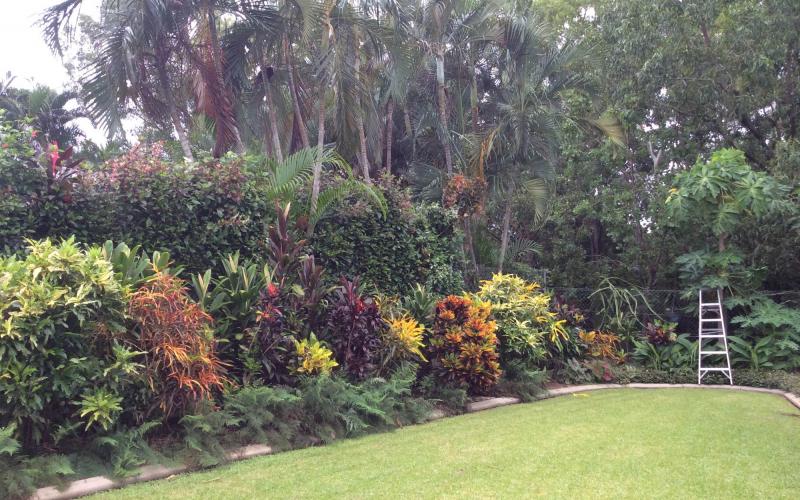Spruce up the garden to make it more attractive to tenants
An attractive, well maintained garden or communal space can be a real point of difference to prospective tenants. Keeping on top of garden maintenance doesn’t have to be a major headache, but what it does require is planning.
Considering what to plant, where to plant it and how to best take care of your plants so that they thrive in Darwin’s tropical climate is key to your success.
Consider Smart technology
Smart irrigation controllers can save up to 10-15% on an already efficient irrigation schedule. These extra water savings are possible as smart controllers automatically adjust irrigation watering based on local weather conditions. Rather than just turning the system on for the dry and off for the wet, smart controllers automatically adjust the amount of water applied to your garden according to weather data it reads from local weather stations. They can even delay irrigation events if rain is forecast!
What to plant
Planting indigenous plants
Give yourself the best chance of success by choosing plants already suited to the local conditions. Ask your local nursery for advice on plant selection or check out our recommendations on plants best suited to the Darwin region.
Mulch
In Darwin’s tropical climate, mulch is critical to your garden’s success. Rich organic mulches are vital for plant nutrients, moisturising soil quality and to prevent erosion.
In the wet season, mulch is essential to keep plant roots cool, water in the soil and weeds down. Waterlogging is also a problem and raised mulched beds will assist drainage.
In the dry season, mulch application is an efficient water conservation strategy. Water loss from the soil by evaporation is minimised or eliminated and the germination and growth of weeds, which also consume water, can be greatly restricted.
If used in conjunction with a poor irrigation system or incorrect scheduling, mulch will not provide the expected savings. Some organic fine mulches have the capacity to intercept and hold considerable amounts of water, acting as a barrier. Both light rainfall and irrigation water applied as small droplets from sprays and microsprays can be prevented from entering the underlying soil by a layer of fine mulch.
The main types of mulch in use include stone, organic mulches, both fine and coarse and soft mulches such as cane and pea straw.
Key mulch tips
- Mulches should have more than 80% of their particles larger than 5mm
- Mulch should be applied about 50mm thick
- Savings from mulch are in the range of 10-20%
Where to plant
Zoning
Well-structured zoning means placing plants with similar water needs together, so that they are all on one irrigation line. You can then control the amount of water that goes to plants on different lines. If zoning is poor, e.g. if citrus trees and natives are on the same line, the citrus will be under-watered and the natives will be over-watered.
Grouping plants with similar water needs together is called hydrozoning. You can have multiple zones in your garden, where each zone can supply plants with the same water needs with the appropriate amount of water.
Find out more about grouping plants into hydrozones
Microclimates
Local influences on climate can be more significant than the climate itself. Imagine a west facing wall in the afternoon sun exposed to a hot dry wind. Contrast this with an east facing area, heavily shaded by overhead trees, protected from the wind and next to a pond or small watercourse.
Consider shade, wind and thermal radiation from buildings when planning your garden design and you could reduce your water consumption in the garden by half.
With thanks to Water Use Efficiency for Irrigated Turf and Landscape by Geoff Connellan, CSIRO Publishing 2013.

